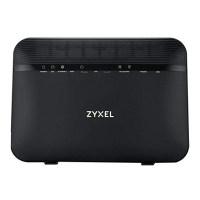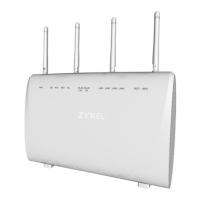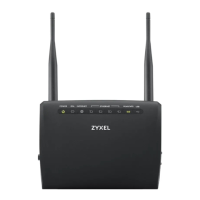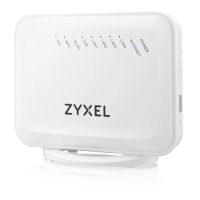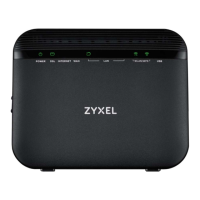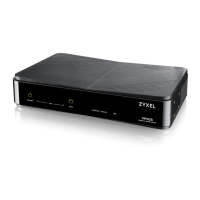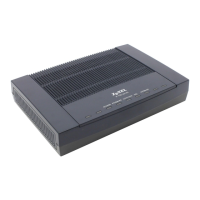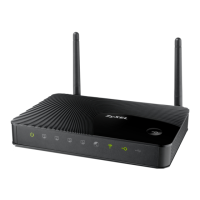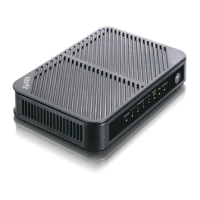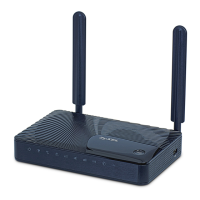Chapter 11 Network Address Translation (NAT)
VMG8924-B10D/B30D User’s Guide
172
11.8 The Sessions Screen
Use this screen to limit the number of concurrent NAT sessions a client can use. Click Network Setting >
NAT > Sessions to display the following screen.
Figure 85 Network Setting > NAT > Sessions
The following table describes the fields in this screen.
11.9 Technical Reference
This part contains more information regarding NAT.
11.9.1 NAT Definitions
Inside/outside denotes where a host is located relative to the VMG, for example, the computers of your
subscribers are the inside hosts, while the web servers on the Internet are the outside hosts.
Global/local denotes the IP address of a host in a packet as the packet traverses a router, for example,
the local address refers to the IP address of a host when the packet is in the local network, while the
global address refers to the IP address of the host when the same packet is traveling in the WAN side.
Global End IP Enter the ending Inside Global IP Address (IGA). This field is blank for One-to-One and Many-to-
One mapping types.
WAN Interface Select a WAN interface to which the address mapping rule applies.
OK Click OK to save your changes.
Cancel Click Cancel to exit this screen without saving.
Table 64 Address Mapping: Add/Edit (continued)
LABEL DESCRIPTION
Table 65 Network Setting > NAT > Sessions
LABEL DESCRIPTION
WAX NAT
Session Per Host
(0 ~ 20480)
Use this field to set a limit to the number of concurrent NAT sessions each client host can have.
If only a few clients use peer to peer applications, you can raise this number to improve their
performance. With heavy peer-to-peer application use, lower this number to ensure no single
client uses too many of the available NAT sessions.
Apply Click this to save your changes on this screen.
Cancel Click this to exit this screen without saving any changes.
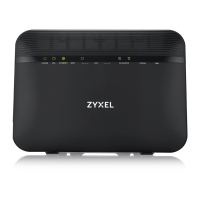
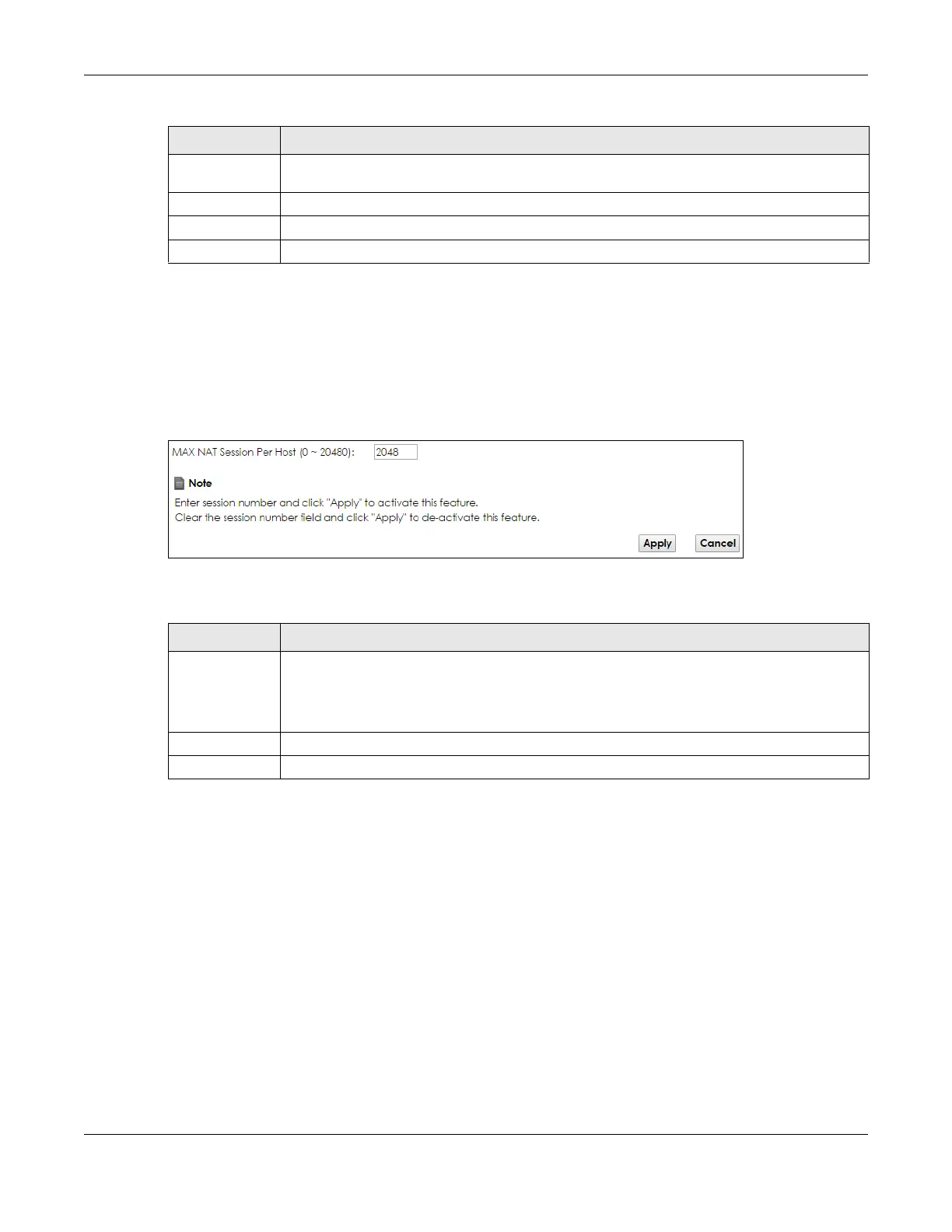